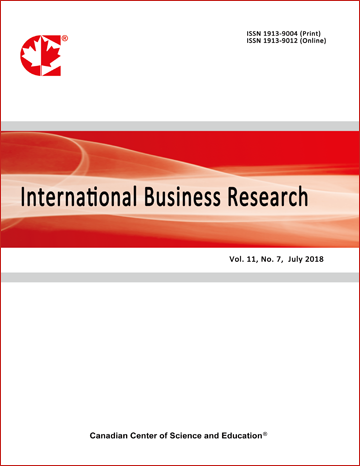Organizations’ Use of Strategic Planning Tools and Techniques in the Sultanate of Oman
- James Rajasekar
- Arooj Al Raee
Abstract
This study on the use of strategic planning tools and techniques in the Sultanate of Oman aims to contribute to theresearch on strategic planning processes. Currently, only a few research studies have been conducted on strategic
planning in developing countries, especially in the Middle East. Almost no evidence of such research exists to
understand the extent of the use of strategic planning tools and techniques in the Sultanate of Oman. The study
used a questionnaire to ask about 14 strategic planning tools and techniques. Twenty organizations in Oman that
have a written strategic plan comprised the sample population. The data were collected from heads of
departments and sections, directors, managers, and advisors directly involved in the strategic planning process.
The analysis shows that the most commonly used strategic planning tools employed by organizations in Oman are
benchmarking, followed by stakeholders analysis and then strengths, weaknesses, opportunities, and threats
(SWOT) analysis, while the Delphi technique, experience curve, Porter’s five forces, and what-if analysis
techniques were the least commonly used. Considering the segmentation of organizations, one can see that the
financial sector and business groups use the tools most frequently whereas the single- and family-ownership
groups have limited use of strategic planning tools. On average, almost 30% of the organizations in Oman never or
very rarely uses strategic planning tools. This paper provides an understanding of strategic planning in Oman and
supplies the missing links in the previous studies conducted on strategic planning.
- Full Text:
 PDF
PDF
- DOI:10.5539/ibr.v7n3p159
Journal Metrics
h-index (August 2025): 114
i10-index (August 2025): 1059
h5-index (August 2025): N/A
h5-median(August 2025): N/A
( The data was calculated based on Google Scholar Citations. Click Here to Learn More. )
Index
- ACNP
- ANVUR (Italian National Agency for the Evaluation of Universities and Research Institutes)
- CNKI Scholar
- CrossRef
- EconBiz
- EconPapers
- Elektronische Zeitschriftenbibliothek (EZB)
- EuroPub Database
- Excellence in Research for Australia (ERA)
- Genamics JournalSeek
- Google Scholar
- Harvard Library
- IDEAS
- Infotrieve
- Mendeley
- Open policy finder
- Qualis/CAPES
- RePEc
- ResearchGate
- ROAD
- Scilit
- Technische Informationsbibliothek (TIB)
- The Keepers Registry
- UCR Library
- UoS Library
- ZBW-German National Library of Economics
- Zeitschriften Daten Bank (ZDB)
Contact
- Kevin DuranEditorial Assistant
- ibr@ccsenet.org
